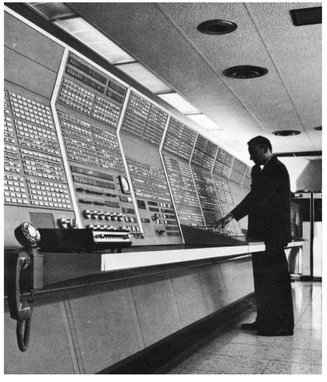15 Epilogue
SAGE, and particularly the development of AN/FSQ-7, was clearly one of the biggest adventures in the history of computing and will always be remembered not only as such, but also as one of the most fertile projects of all time. It also demonstrated the amount of innovation possible on a basically unrestricted budget – a direct result of the Cold War – together with a healthy environment of open recognition of errors –something next to impossible in today’s cost driven environments:
“We built that big memory, and we didn’t go to the steering committee to get approval for it. We didn’t go up there and say, ‘Now, here’s what we ought to do, it’s going to cost this many million dollars, it’s going to take us this long, and you must give us approval for it.’ We just had a pocket of money that was for advanced research. We didn’t tell anybody what it was for; we didn’t have to. Take any one of those developments – whether it was that memory, the Memory Test Computer, or the cathode-ray tubes and the Charactron tubes – if we had had to go through the management stuff that we have to go through now to get $ 100,000 worth of freedom, we would never have done any of them.”554
Some institutions established during the developments of Whirlwind and AN/FSQ-7 are still in business today. Lincoln Laboratory, for example, is doing research on communication systems, cyber security and information sciences in general, tactical systems, air traffic control,555 air and missile defense technology, etc.:
“[Lincoln] Laboratory did not close down; it entered its second era, one characterized by a significant reduction in activity. Between 1958 and 1960, funding fell by nearly 30%. Yet during this period of uncertainty, it became very clear that much of the work on SAGE was of value to other programs of national interest. The solid-state physics group, for instance, had already achieved an international reputation in its own right. The long-range communications group, originally devoted to SAGE, had embarked on a major effort to export the feasibility of using passive satellites for communications. 556

Figure 15.1: Console of the AN/FSQ-32
Even AN/FSQ-7’s ill-fated successor, the AN/FSQ-7A or AN/FSQ-32, of which only two prototypes were actually built, had some impact on the field of computer science. This machine, affectionately called Super SAGE, featured a word length of 48 bits, was fully transistorized, liquid cooled, and clocked at a remarkable 6.4 MHz. Figure 15.1 shows the central maintenance console of one of the two AN/FSQ-32 systems which proved to be extremely reliable. Eventually, one system was installed at an IBM research center while the other computer found its home at SDC. This latter machine would become part of early experiments in packet switched networks in October 1965 showing their practicability and further paving the way to today’s ubiquitous computer networks.557
Thanks to many individuals, a wealth of documents regarding Whirlwind and AN/FSQ-7 has been preserved.558 Unfortunately, much of AN/FSQ-7’s hardware has been lost – although some museums have parts of these marvelous machines on display, no complete installation has survived. The situation regarding actual software, ranging from diagnostics to the DCAs and CCAs is even worse as nothing has surfaced to date.
As the heritage of AN/FSQ-7 still shapes our world in ways unforeseen in the 1950s, it is to be hoped that future generations will realize the importance and value of such technological artifacts and preserve them as vital parts of the history of our culture.
